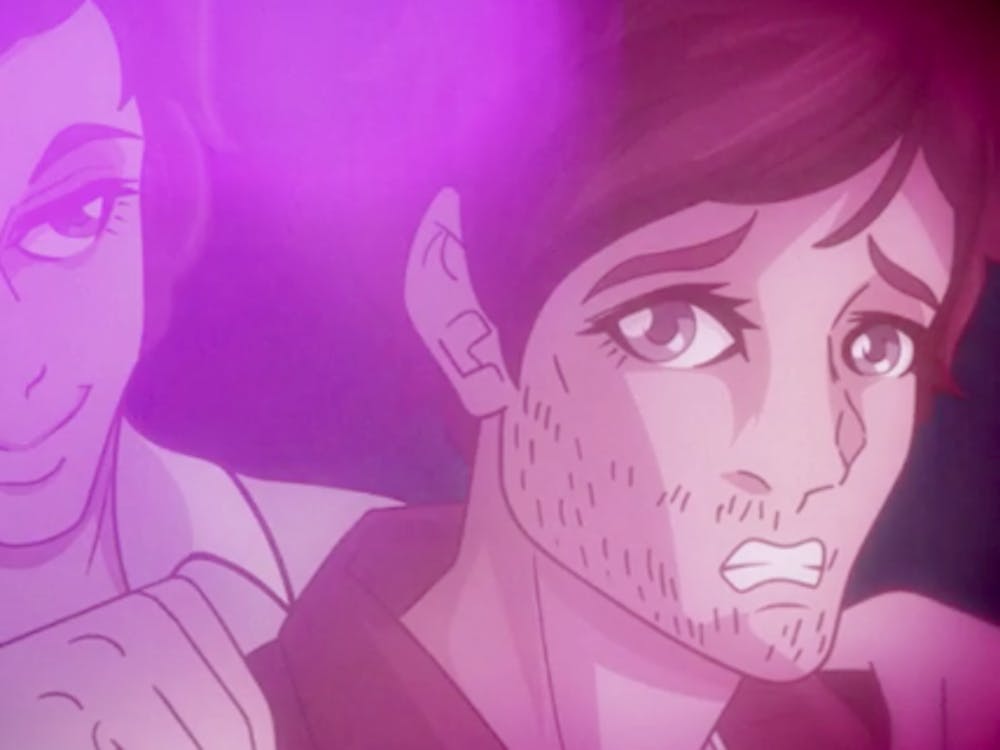In episode three of the popular and increasingly controversial HBO series “Euphoria,” there is a sex scene. The show — which depicts the complicated, traumatizing lives and relationships of modern high school students — contains multiple instances of graphic intercourse, but this particular scene garnered intense backlash despite being an animated, ostensibly PG depiction of sex between two adults. What rattled audiences was not the erotic content: it was the fact that the two participants were Harry Styles and Louis Tomlinson of the once-famous band One Direction.
The sequence is a segment of a larger flashback devoted to Kat, an awkward teenage girl who spent her early adolescent years writing fan fiction. Although the animated excerpt from Kat’s most famous piece of fan fiction is clearly played for laughs with its anime-influenced art style and Zendaya’s deadpan narration, few viewers found it very amusing. There was immediate online fallout, especially once it was reported that neither Harry nor Louis had consented to or even been contacted about the scene. It also brought a previously niche Internet community directly to the forefront of mainstream social discourse and raised an important question about boundaries: where should the line be drawn?
Writing fan fiction about real people — typically celebrities, musicians and actors — is hardly a new trend. Notorious platforms like Wattpad and Tumblr have grown into overwhelmingly extensive archives of “real people fiction,” in which authors either imagine themselves in a relationship with their favorite celebrity or fabricate a romantic affair between two celebrities of their choosing, often co-stars or members of the same band. While these stories might appear innocuous, like fan fiction about Harry Potter and his friends or the Avengers, they are at their core a disturbing reflection of the far-reaching implications of celebrity culture and parasocial relationships.
This is the reality for a great number of celebrities, ranging from the most well-known actors to indie musicians and YouTube stars. It might seem ridiculous to care so much about the privacy of famous people, given their extensive amount of resources and wealth, but even celebrities deserve some measure of secrecy, especially when sex and romance are concerned. Writing pornographic content about a real person — with his or her own rich inner-life, thoughts and emotions that can not ever be wholly communicated over any social media platform — is not only morally wrong, but it is also a violation of consent. These stories are not just the musings or fantasies of a single individual with a crush on a movie star: they are created with the intention of being consumed and shared by others without the consent of the person being depicted. Ignoring the potentially libelous implications of “real people fiction,” it is simply a blatant violation of a person’s privacy and agency.
Additionally, the proliferation of “real people fiction” has risen synchronously with the ubiquity of social media. Celebrities can now connect with their fans via interacting on Instagram or Twitter, giving them a shoutout in a YouTube video or even sending them a personalized message or video (often in exchange for money). The accessibility of once untouchable icons has led to an increase in the incidence of parasocial relationships, in which one person invests significant time and energy into another individual who is not aware of their existence. Learning about a celebrity’s interests and opinions over social media might give someone — especially the young adults and teenagers who often follow these celebrities — the impression that he or she knows that celebrity.
There are whole communities devoted to dissecting and theorizing about the lives of stars based solely on their social media and occasional public appearances, where strangers collaborate to invent thoughts and feelings for unsuspecting celebrities. This trend has not only influenced the uncanny realism of so much “real person fiction,” it has led fans to speculate about a celebrity’s relationship to the point of disruption. Both Harry and Louis of the now-famous “Euphoria” scene have spoken out regarding the tremendous amount of supposition about their perceived “relationship,” saying that their friendship was damaged by the fan theories and fan fiction and that they had to actively avoid sharing or saying anything that might have fueled this speculation.
In the face of the “Euphoria” backlash, a separate camp emerged accusing critics of simply targeting a hobby common among teenage girls and young women. While young girls are often the victims of disproportionate hostility for their interests, this particular trend is deserving of judgment for its real-world ramifications. People, no matter how famous, are not props. They are not characters or loosely drawn personas that can have whatever attributes and behaviors assigned to them. Their lives and relationships are not up for grabs. This 2017 interview with Louis Tomlinson about his destroyed friendship with Harry Styles perhaps best summarizes the impact that such aggressive, invasive behavior can have: “It created this atmosphere between the two of us where everyone was looking into everything we did… It took away the vibe you get off anyone. It made everything, I think on both fences, a little bit more unapproachable.”
Get The Chronicle straight to your inbox
Signup for our weekly newsletter. Cancel at any time.

